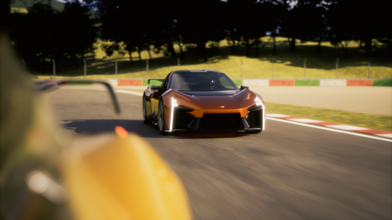Performance EV brand Polestar is launching two SUVs of broadly similar size and technology at pretty much the same time. The brand has just held its first media drives for both simultaneously in Europe - and yes, DRIVEN was there, but we can't tell you much about the experience until the global embargo lifts next month.
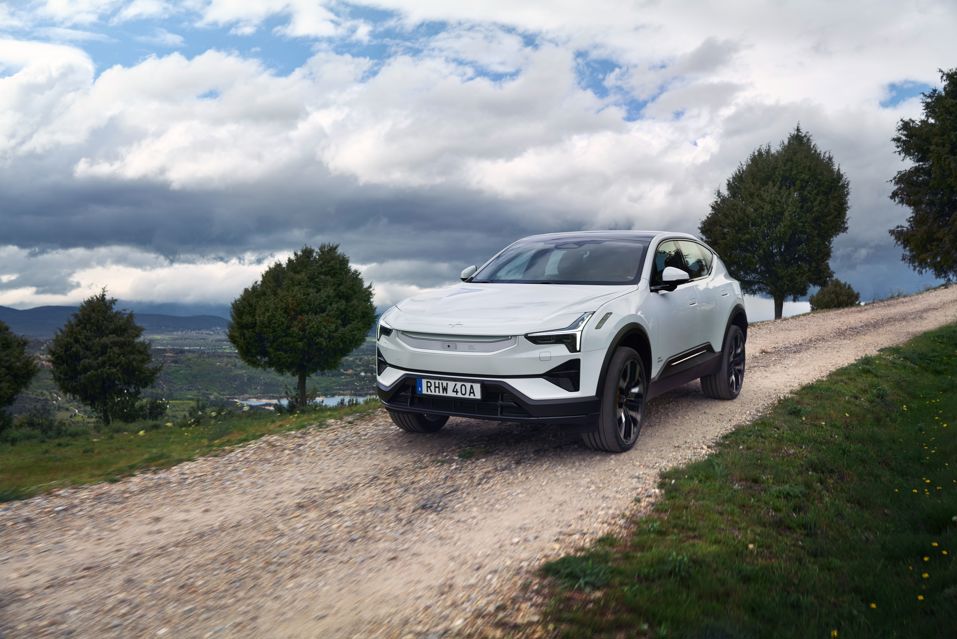
We can tell you how the two compare, though - and why Polestar has chosen to launch them together.
In very general terms, the Polestar 3 is a luxury SUV intended to compete with the likes of the BMW iX, Mercedes-Benz EQE SUV and even some ICE models like the Porsche Cayenne. The 4 is an SUV-coupe with its sights on smaller, sportier models like the new Porsche Macan Electric.
In fact, the company didn't originally intend to launch 3 and 4 together at all. The 3 was revealed back in 2022 (check out our video walkaround here), and the idea was to introduce that in 2023, to be followed by the 4 this year.
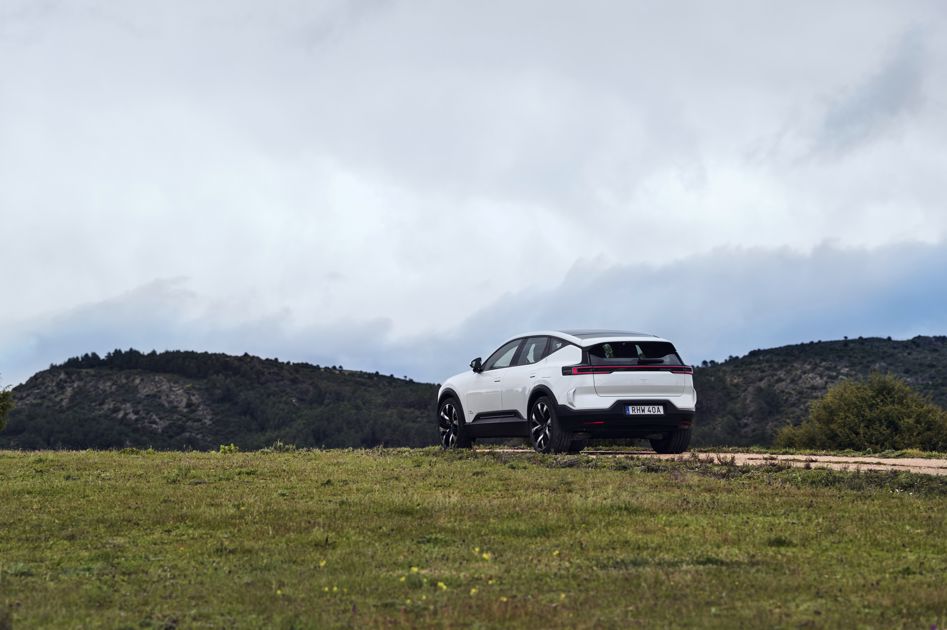
But getting the electronic architecture sorted took more time than expected, because this is also a very important platform for sister brand Volvo: it underpins the new EX90 SUV. The software is is very centralised, with one massive computer brain running the whole car, so getting it to all work together for different brands was a challenge.
Which brings us to the next important point: these are are actually two completely separate cars. The 3 is built on a platform called SPA2, which is most closely related to Volvo.
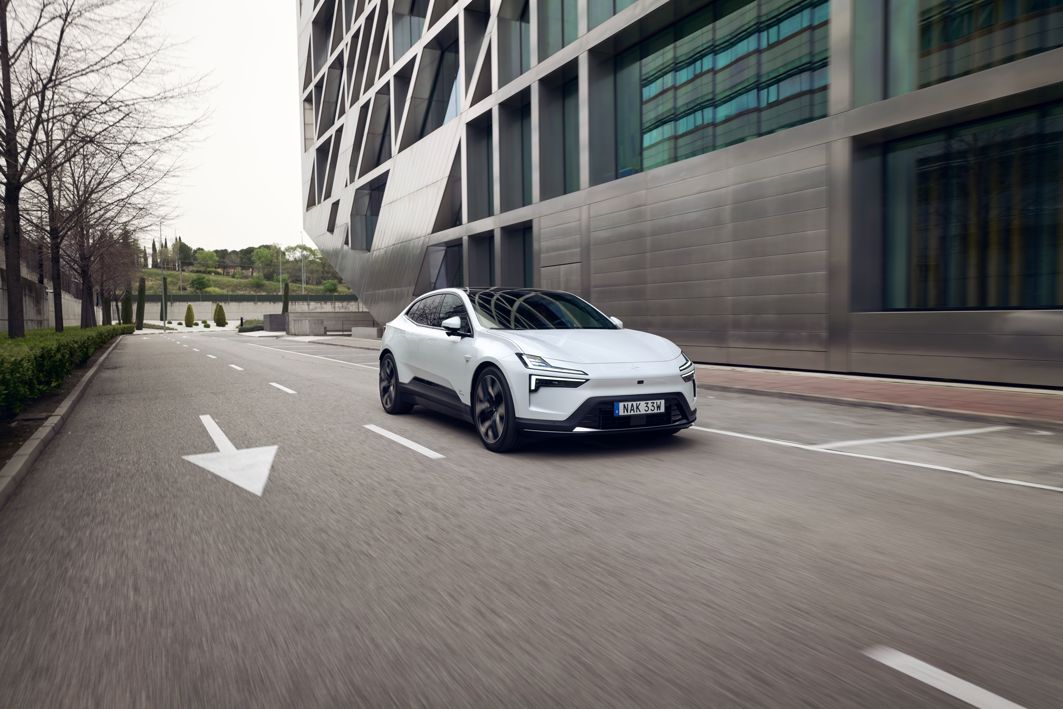
The 4 is built on the SEA platform from parent company Geely, which is already used for some Chinese models including the Ji Yue 01 and Zeekr 001. The electronic architecture is very different to the 3, a more modular arrangement that allows various different technologies to be linked together. They're also made in different places: both in separate factories in China, but the 3 will be manufactured in the US from this year and the 4 in South Korea from 2025.
This is all technical information that may be of little interest to the people who actually buy these cars, but it does highlight just how different the two vehicles are. Consider the disparate design details: the 3 has Polestar's much-talked-out SmartZone panel at the front, which houses radar and various sensors; the 4 doesn't because its active safety systems are more camera-based.
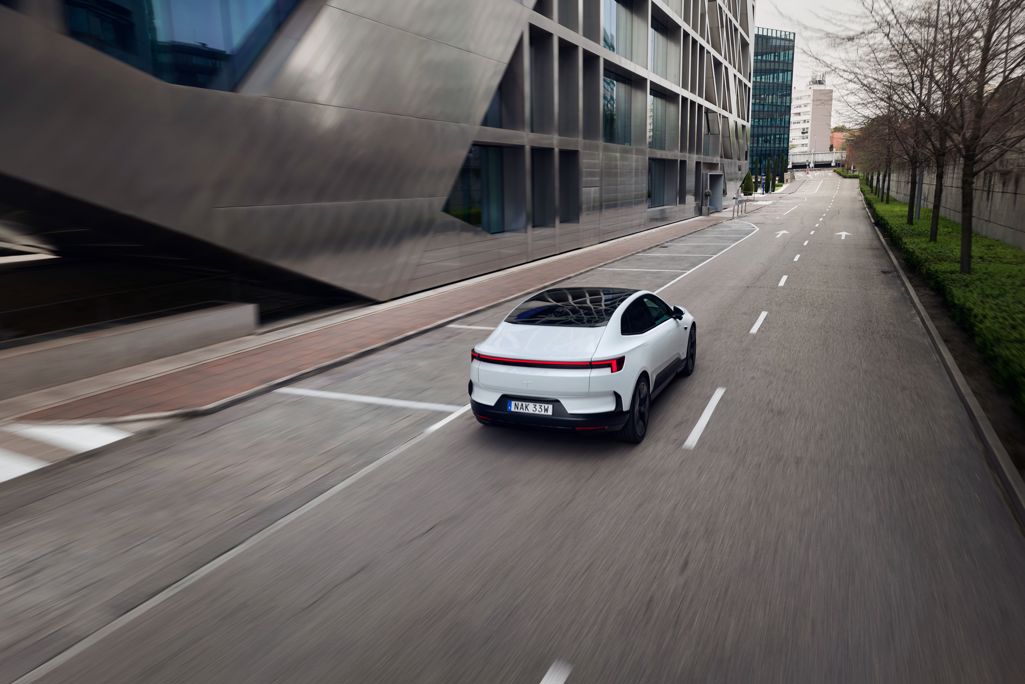
Even the doorhandles are different, which is odd for two cars from the same company: both powered, but the 3's lift up like tiny wings, whereas the 4's slide out horizontally.
Neither are strictly conventional SUVs. The 3 is aimed more at the luxury mainstream, but Polestar says the decision to make it a 5, not 7, seater meant it could use the long wheelbase to create a sports car-like driving position (albeit still with raised ride height and a command view) and spacious rear compartment, without having the high roof that usually goes hand-in-hand with SUVs.
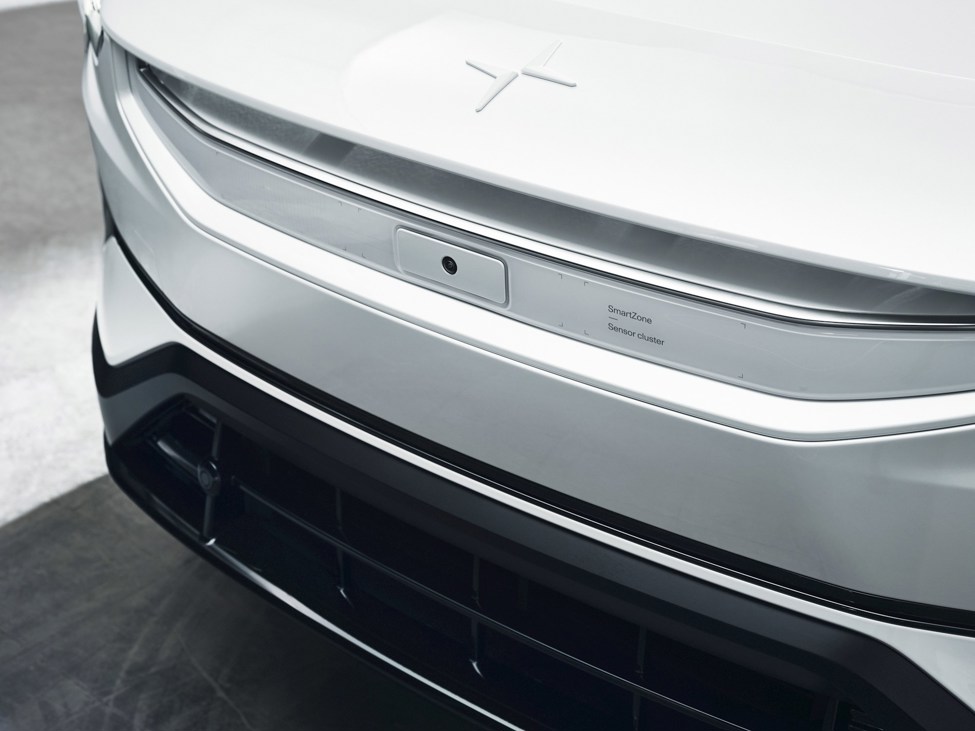
The 3 features a lot of neat aero not unlike the sister Lotus Eletre (although Polestar says there's nothing shared between the two): there's a wing integrated into the bonnet and a large "blade" over the back window.
The 4 is more of a coupe, but with that headline USP: no back window, which Polestar says has allowed it to have a suitably low roofline but still with excellent rear-seat space. Rearward vision is handled by a tiny camera mounted on the roof. The styling is much more organic than the 3, with fewer tricky spoilers and things.
Polestar being Polestar, the numbers tell you nothing about the size or market positioning; they are simply the 3rd and 4th models to be launched. The 4 is ostensibly the smaller of the two: D-segment in car industry-speak, while the 3 is E-segment.
Semantics really, because while the 3 is 60mm longer, the 4 has a 14mm-longer wheelbase (2999mm). They're almost identical in width, but as you'd expect the 3 is 80mm taller; even though it's still very low for a luxury SUV.
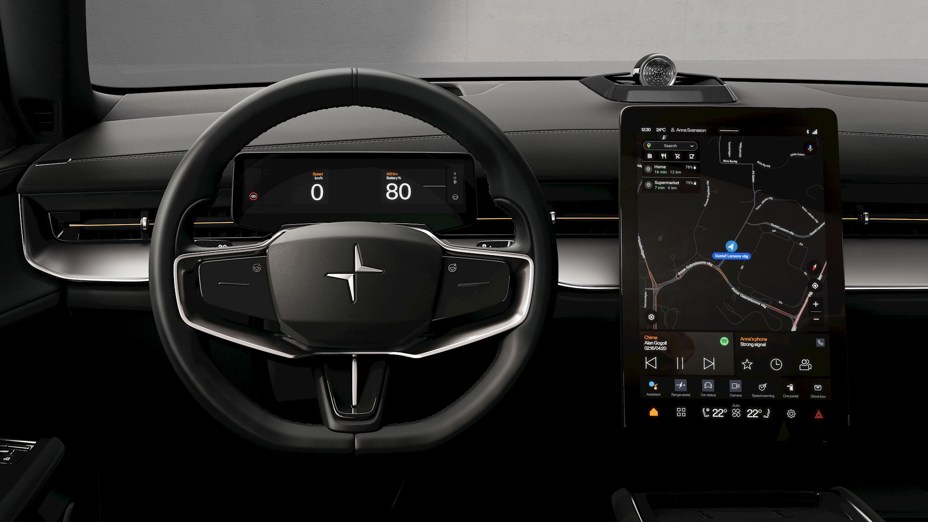
Thanks to air suspension, the 3's minimum ride height of 202mm can be raised to 250mm. The 4 rides on coil springs (but still with adaptive dampers on the top model) and offers ground clearance of 166mm.
There are differences inside, too. Same styling themes and sustainable materials (including bio-attributed MicroTech "vegan leather" that's PVC-free), but the 3 has more hard surfaces and a more technical look, while the 4 goes for a softer, more tactile approach.
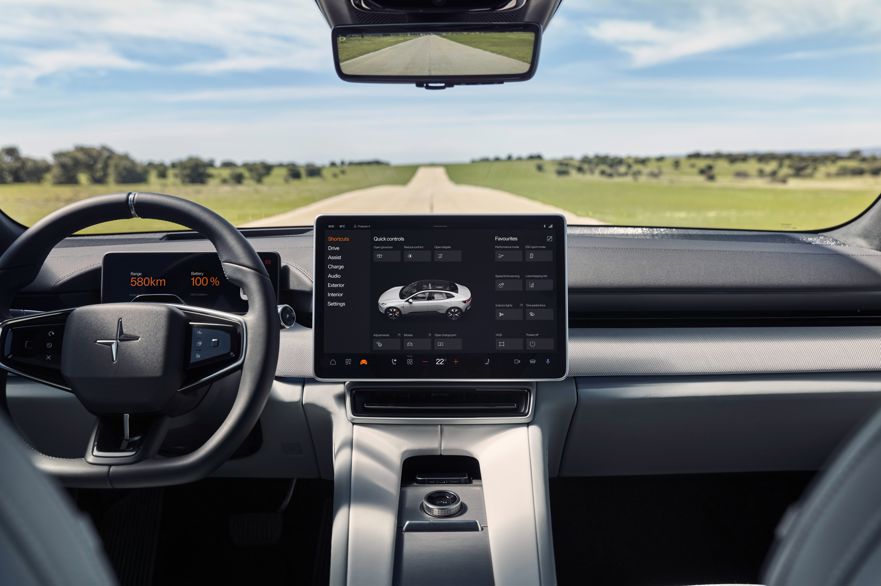
And while both have a fully integrated Google infotainment system, the 3's is closer to what we already know with the Polestar 2, including a portrait screen. The 4's display is landscape and includes a new split-screen feature.
The Polestar 3 Launch Edition 111kWh long range dual motor starts at $169,990 (which includes a number of extras, including an amazing Bowers & Wilkins audio setup). Buyers can also opt for a $15k Performance Pack that raises power from 360kW/840Nm to 380kW/910Nm, although you lose a little range: down from 610km to 560km. Once the Launch Edition runs out, regular start price is $173,990.
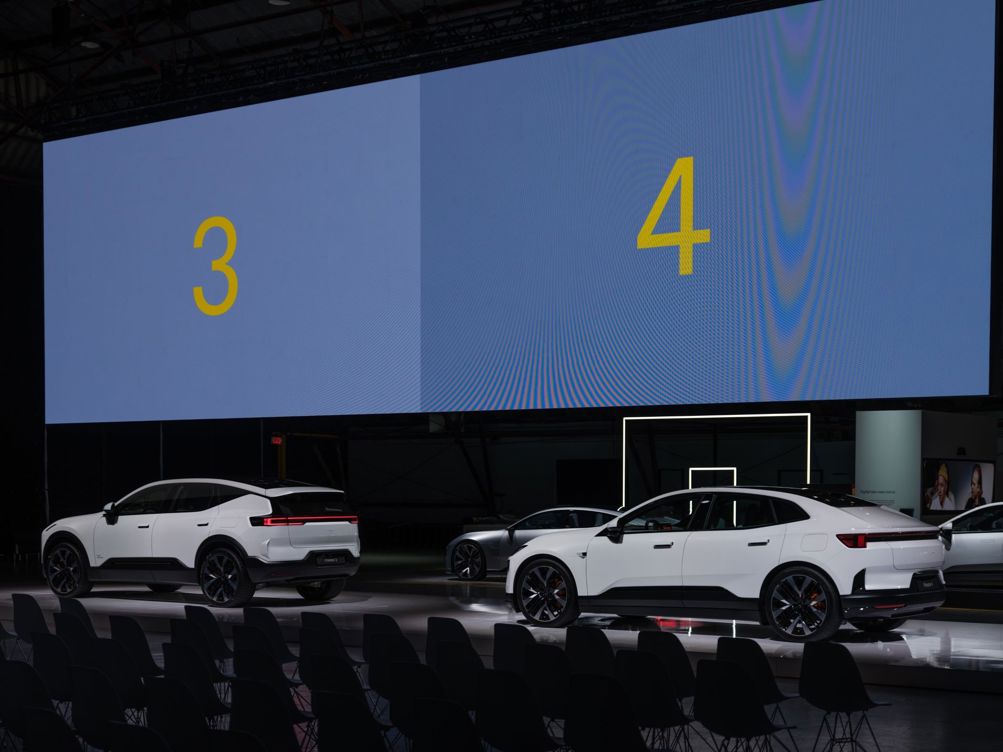
The Polestar 4 comes as a $119,900 single-motor (RWD) or the $129,900 dual-motor (AWD). Both have a 100kWh battery, giving range of 620km and 580km respectively.
The single-motor is 200kW/383Nm, the dual-motor 400kW/686Nm: with 0-100km/h in 3.8 seconds, the latter is the fastest Polestar you can buy.
Pilot and Plus safety/equipment packs are standard in NZ (they are optional in most countries), meaning the main extras are the $4k Pro Pack (21in wheels, design details) and $10k Performance Pack (for the dual-motor only), which brings 22in wheels, Brembo brakes, chassis tuning and gold detailing.
Both cars can be configured on the Polestar NZ website now. First deliveries of the 3 are scheduled for July and the 4 is not far behind: expect to see it on Kiwi roads in September. Look out for our drive stories soon.





